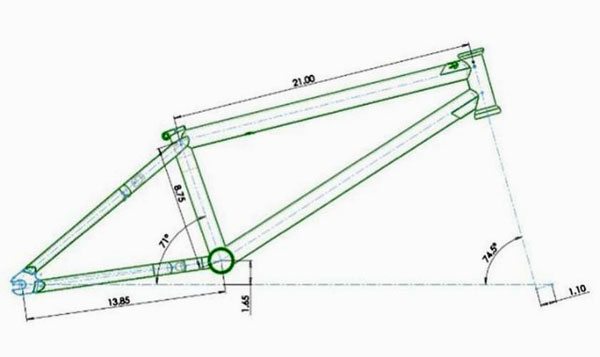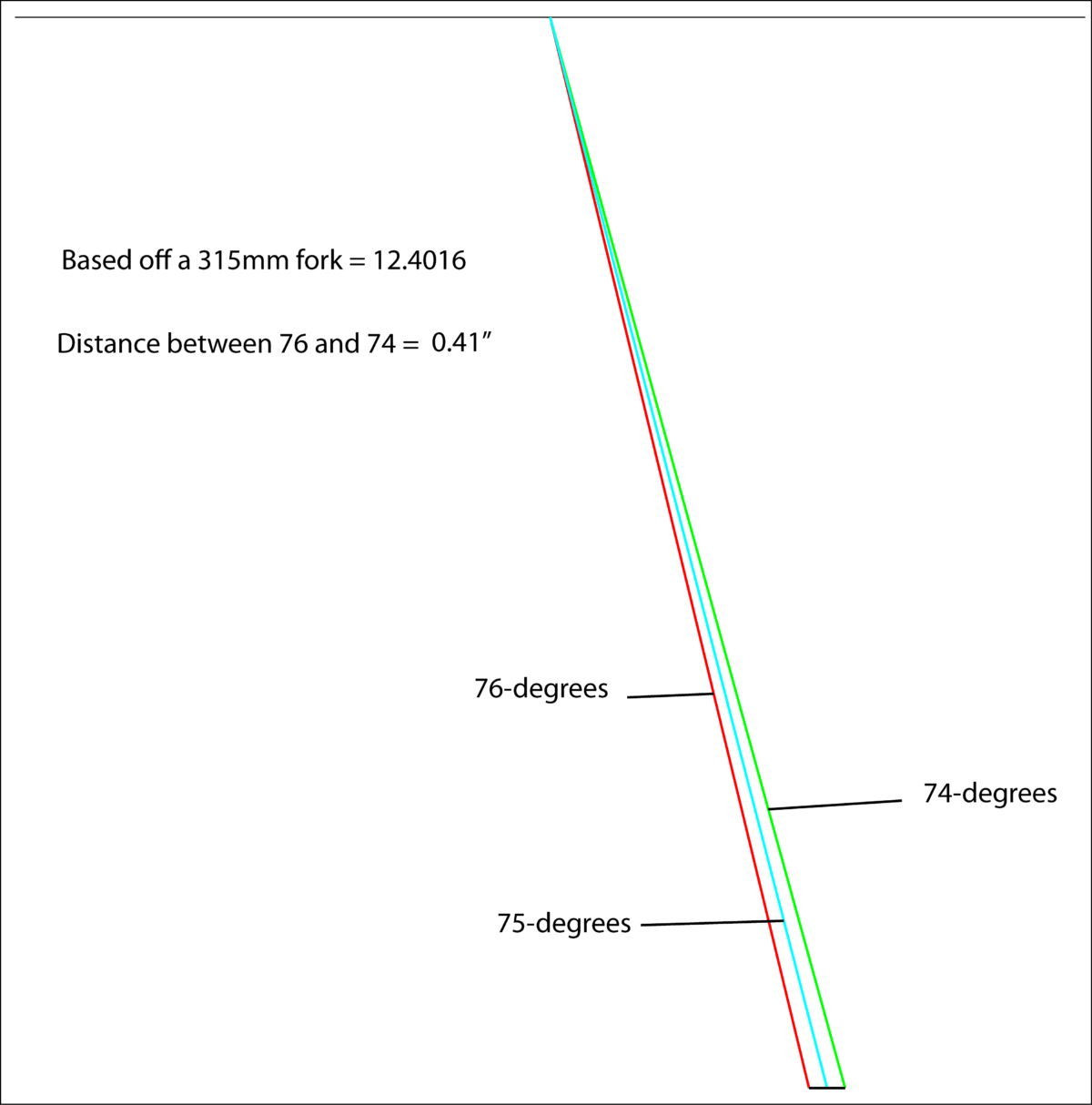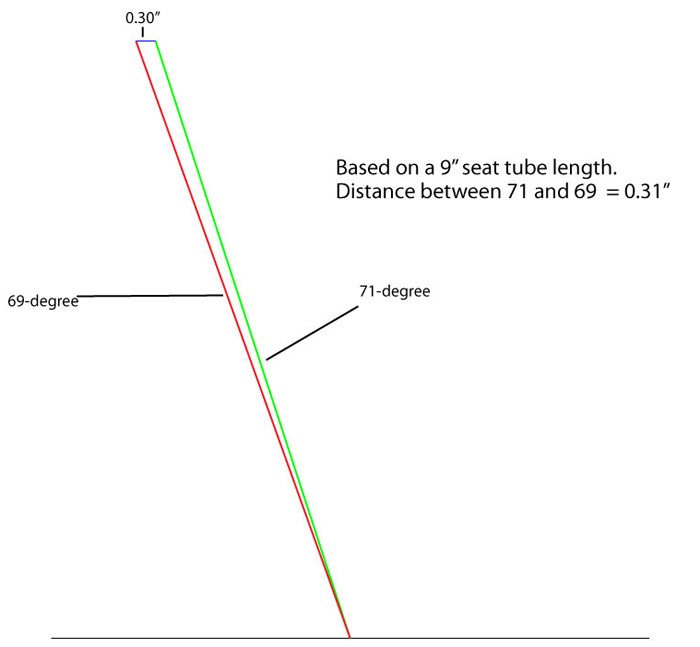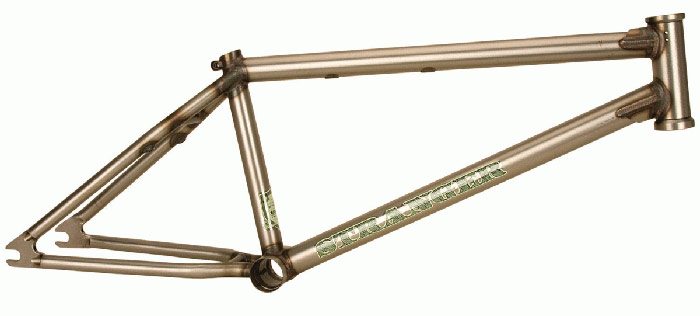Let’s take a closer look at what BMX Frame Geometry is all about…

With it being the time of the year when we start seeing a bunch of new BMX Frames being released or the latest version of a previous model, we figured it would be a good time to take a closer look at what those numbers like 74.5, 13.25″ and 71 really mean, and how that can change the way your bike will feel and ride. Over the years, BMX frames have been refined over and over again to not only offer a superior product, but a frame that is truly designed for the type of riding that you are doing. Now days, it seems like we’re seeing micro adjustments to keep up with the trends or just Minor Details being added to the frames to make them stand out. If you’re considering a new frame, or just curious how the geometry of a BMX frame works… Keep reading.
Update: Here’s a video Brant Moore put together that is entirely based off this write up. If you’re more of a visual / video learner, this might be for you! Otherwise keep on reading!
BMX Frame Geometry
Top Tube Length
Top tube lengths are one of those things that we see a very wide variety of options from 20″ (sometimes smaller in the 19″ range or smaller for the 18″ and 16″ aftermarket builds) up through 21″ and even 22″. There are also 24″ and 26″ cruiser options, but let’s focus here on the 20″ range. The top tube length is the measure of the distance between the center of your head tube to the center of your seat tube. The size is generally a preference to the rider based on height and how much room they want to work with. Typically we see smaller guys in the sub and lower 5′ range working with the 20 – 20.5″ sizes, mid to upper 5′ range working with the 20.75″ range and guys from upper 5′ to 6’and up heights riding 21″ + sizes. Generally this gives you room for your legs, while giving you a proper arms reach to your bars without over extending yourself causing you to be hunched over. It’s usually pretty easy to see if a rider is on a bike that’s too big or too small for them because it doesn’t look natural. Once again, this size can be a preference. I’m about 5′ 10″ and run a 21″ top tube length. I have longer legs and arms with a shorter mid section, so I can usually go with anything from 20.75″ to 21″ without noticing too much of a change.
A longer frame can also make a bike feel more stable because your wheels will be further apart, where a shorter frame will bring the wheels closer together making it more responsive. This can also be altered by the head tube angle and chain stay length.
Head Tube Angle
The head tube angle is one of those things that we have seen change in what would seem only a small amount when it comes to BMX frame Geometry, but it has a much bigger effect on the way a BMX bike rides than you would imagine. Traditionally BMX frames are available with anywhere between a 74 to 76 degree head tube angle. With most frames falling in the 75-degree category. The angle of the head tube has changed with the trends from trails and ramp riding being the most popular to street taking over which utilizes more nose balance and a shorter distance between the wheels.
Some of you might be wondering how something like 2-degrees of change can change so much. Well, below you can find a graphic we put together showing how the angle can change things.

We based our numbers off a 315mm long fork, which is 12.4016″. We took the 12.40″ line, then rotated it 74-degrees, 75-degrees and 76-degrees. If the length of the fork was shorter, it would have less of an effect and if it was longer it would increase the distance more. On this particular one, when we rotate these lines, we get a gap of 0.41″ between the 76-degree and 74-degrees and a 0.215″ gap from either 74 or 76 to 75-degrees. 0.41″ isn’t a huge change, but would you notice a 20.59″ top tube length versus a 21″? Most likely, yes.
A steeper head tube angle (76-degrees) will bring the front wheel closer to you, making it easier to roll forward for nose manuals and front end tricks, where a mellower (74-degrees) will move the wheel further away, making it harder to roll forward on your front end for a nose manual. With the wheel being further forward, it makes your front end less twitchy and better for more gradual turning, like on trails. A steeper angle brings gap between your wheels closer together and gives the bike a more responsive feel, so turning your bars a little will do more than a mellower angle. That is why we see a lot of nose manuals and turning on the front end these days from the street guys running the steeper head tube angles.
Seat Tube Angle
The seat tube angle is another key component on the overall feel of the frame. Traditional BMX frames use a 71-degree seat tube angle, but we have found a number of frames using a 70-degree and 69-degree angle as well. The seat tube angle can alter the overall feel of the length of the frame without changing the top tube length. For example, a 21″ top tube frame with a 71-degree seat tube angle would make it feel like a 21″ top tube frame should feel distance wise.

However, if you take a 21″ top tube frame and pair it with a 69-degree seat tube angle, the top tube length stays the same, but the angle moves the bottom bracket closer to the head tube, which makes it feel more like a 20.75 – 20.8″ frame, we give it a range because this can be effected by the seat tube height. As you can see from the drawing above, we based our numbers off a 9″ seat tube height, which is pretty standard. So from the middle of the top tube to the middle of the bottom bracket, we can see a 0.30″ difference between the two angles. That means a 69-degree angle would move your bottom bracket 0.30″ closer to the head tube. Would you notice a difference between a 21″ and a 20.69″ top tube? Most likely.
Seat Tube Height
Seat tube height (Or standover height) is the vertical tube running between the top tube and bottom bracket. As we mentioned above, this tube has a 71-degree angle traditionally, but have seen frames with 70 or 69. The seat tube height brings the height of the top tube up or down. A lower seat tube height, for an extreme example, the Blackeye Killorado frame from years ago had something like a 6.35″ seat tube height will see less of a change in the feel of a top tube length by a 69-degree versus 71-degree seat tube height because we notice a bigger distance between the two angles at longer lengths, where the Stranger Quan frame with a 10″ stand over height would notice a bigger difference between a 69 and 71-degree angle (the frame has a 70-degree angle). Not only does the height alter the look for the frame, as you can see from the very low slung Killorado frame below, some riders say a lower seat tube height makes tailwhips easier, where a taller seat tube height which benefits from knees pinching the seat make barspins easier. This is mostly a personal preference, but the seat tube angle can alter the feel of the bike as well which is why watching both the seat tube height and angle are are important.


Talk about polar opposites. Blackeye Killorado with a 6.35″ standover and the Stranger Quan frame with a 10″ standover.
Bottom Bracket Height
Bottom bracket height is based off the 20″ diameter of BMX wheels and the height that the bottom bracket sits above the center of the drop outs. From the center of the drop outs to the bottom of a 20″ wheel is 10″. So, raising or lowering the bottom bracket height changes how high it sits from the bottom. Most frames range from the 11.5″ to 11.75″ range, with a few lower or higher. The height can alter the overall feel of the bike. A lower bottom bracket gives you a more stable feel and can almost make the bike feel slower, where a higher bottom bracket can make it more twitchy and easier to spin. Another thing to consider is that bottom bracket height can also be altered by tire size. 2.40″ knobby trails tires will lift you up a little more than a 2.35″ slick street tire for example.
Chain stay length
Chain stay length is one measurement we see a big range that is dependent on the style of riding when it comes to BMX frame geometry. The ALVX frame from BSD features a VERY short 12.5″ chain stay length, where a trails frame like the Fit Hartbreaker frame can go as much as 14.5″. This distance can alter the distance between the wheels which can make the bike feel more stable (further apart) for trails guys or more aggressive (closer together) for the street guys. A shorter back end will make it easier for manuals and hopping, where the longer back end will make it harder to loop out and easier to keep the bike under you when jumping. This is more or less a preference on how you like to ride. Going in the middle will give you a good balance between the two which can be ideal for the guys who like riding ramps or like to ride street, trails and ramps.
So, that about wraps things up for how BMX frame geometry works. With so many frames to choose from, there’s a good chance you are able to find all the different features that work for how you like to ride. Whether it’s a steep head tube angle, short top tube and medium length chain stay with a higher bottom bracket to a mellower head tube with a longer top tube, lower bottom bracket and longer chain stay length. Those little numbers can make a big difference.
Check out these BMX FRAMES
Questions? Comments? Are we wrong about anything? Let us know in the comments below.
VISIT: FRONT PAGE // DAILY SECTION // BMX COLOR APP // BMX VIDEOS // RANDOM // BMX Games
